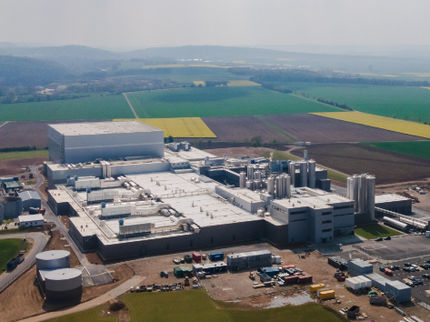ISM professor: "The Christmas roast from the printer is no longer science fiction"
Whether it's bratwurst or Christmas roast - for a majority of Germans, meat is on the table at the holidays. Yet the digital transformation will greatly change meat production and our idea of "meat," says Professor Dr.-Ing. Matthias Lütke Entrup. The expert for operations management in the consumer goods industry is a university lecturer at the International School of Management (ISM) and has been dealing with the challenges of the dairy and meat industry along the entire value chain for years.

symbolic picture
computer generated picture
The meat industry is facing major challenges. While the majority of Germans do not want to give up steak and sausage, at the same time, demands on the industry are increasing with regard to animal welfare and sustainability issues. "Especially in Germany, consumers are very price-sensitive when it comes to meat. At the same time, demands for sustainable production are becoming louder and louder." In the view of ISM Professor Dr.-Ing. Matthias Lütke Entrup, increasing digitization along the entire value chain represents a huge opportunity for the industry, which could change our idea of "meat" forever:
Digitalization approaches today
Digital techniques are already being applied at all stages of the value chain, but the digital transformation of the industry is only just beginning. "For example, the U.S. is leading the way in "smart and precision farming" in agriculture. By applying modern information technologies such as sensors, drones, etc., farming can be much better monitored and land taken care of. The trend in feed composition is also moving toward composing it in a way that is appropriate for the animals based on data." Retailers are also making great strides in digitization. For example, many food retailers are digitizing and automating their warehouse and store processes, as in many regions there is hardly any labor available for manual processes. This applies in particular to skilled workers for the service counter.
Developments with a promising future
According to the economics professor, the major innovations are expected in the next few years: As examples, the expert mentions, for example, the use of satellite data for the optimization of arable farming, the further development of the barcode with RFID technology for better data collection and measurement (e.g., for a more precisely determinable shelf life), all the way to meat from the laboratory. Until a few years ago, the thought of a configured steak that comes directly from the printer or pieces of meat that grow in the laboratory seemed like science fiction. In the meantime, such meat alternatives are increasingly becoming reality. Synthetic in vitro meat is not only raising hopes among animal lovers that it will reduce animal slaughter. Meat producers also expect a lot from the meat of the future. "Many vegetarians give up eating meat because of animal welfare considerations, not because they don't like the taste."
Synthetic meat
Lab-grown meat offers the potential to revolutionize the entire meat industry. Unlike plant-based alternatives, so-called in vitro meat involves the cultivation of tissue to produce synthetic meat. For a long time, lab-grown meat was considered too expensive and therefore uncompetitive. However, thanks to investments by the major players in the meat market, synthetic meat production (so-called "cell-based meat") is becoming increasingly affordable. In terms of sustainability, in vitro meat has the advantage of eliminating the need to fatten and slaughter animals, but even synthetic meat cannot yet be considered a sustainable solution. "While cattle fattening with its high methane production is a major burden on the climate, the new synthetic meat production currently still produces a lot of CO2 due to the high energy requirements," explains the ISM professor. In addition, the question of how consumers and health authorities will receive meat derived from cultured cells is still open.
Meat alternatives from the 3D printer
Another alternative that is still in the earlier stages of development is meat from 3D printers. However, the printing technology is still in its infancy. Starting materials for 3D printing are either plant-based products or artificially created cell-based meat. In the latter case, muscle and fat cells as well as other binding agents are used to create an end product that would be virtually indistinguishable from naturally grown meat. Lütke Entrup's prediction: "The combination of digital technologies and measures to combat climate change will have a major impact on the way we live and eat in the future - especially when it comes to meat consumption."
Professor Dr.-Ing. Matthias Lütke Entrup teaches operations management in the consumer goods industry at the International School of Management (ISM) with a view to the entire value chain (purchasing, supply chain management, production, controlling). He is also responsible for the part-time Master's program at ISM. Before joining ISM, Lütke Entrup worked as a consultant at A.T. Kearney and as managing director of finance at Valensina GmbH, among other positions. In addition to his university activities, the qualified industrial engineer conducts research on various aspects and challenges of the consumer goods industry and also makes his knowledge available to companies as a consultant on a part-time basis.
Note: This article has been translated using a computer system without human intervention. LUMITOS offers these automatic translations to present a wider range of current news. Since this article has been translated with automatic translation, it is possible that it contains errors in vocabulary, syntax or grammar. The original article in German can be found here.






























































